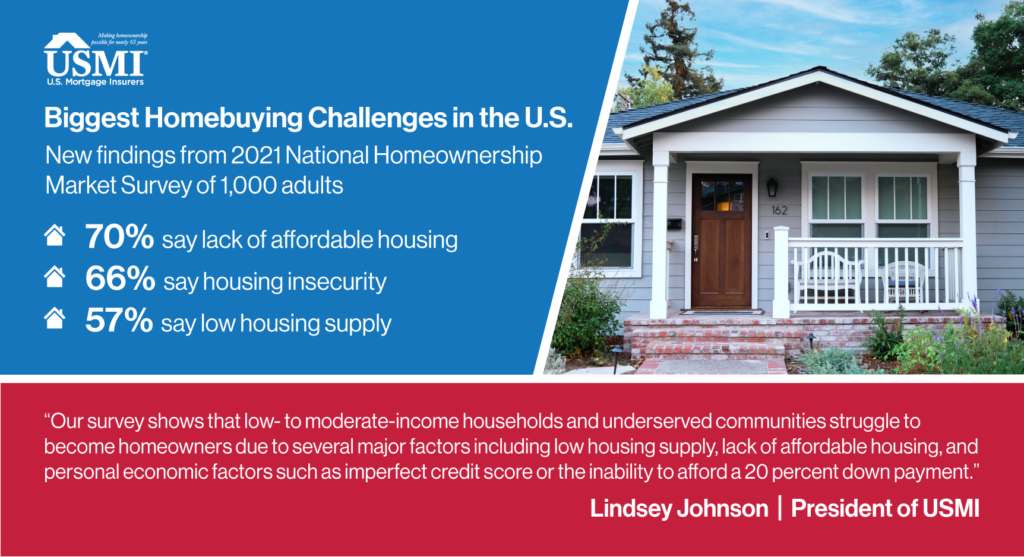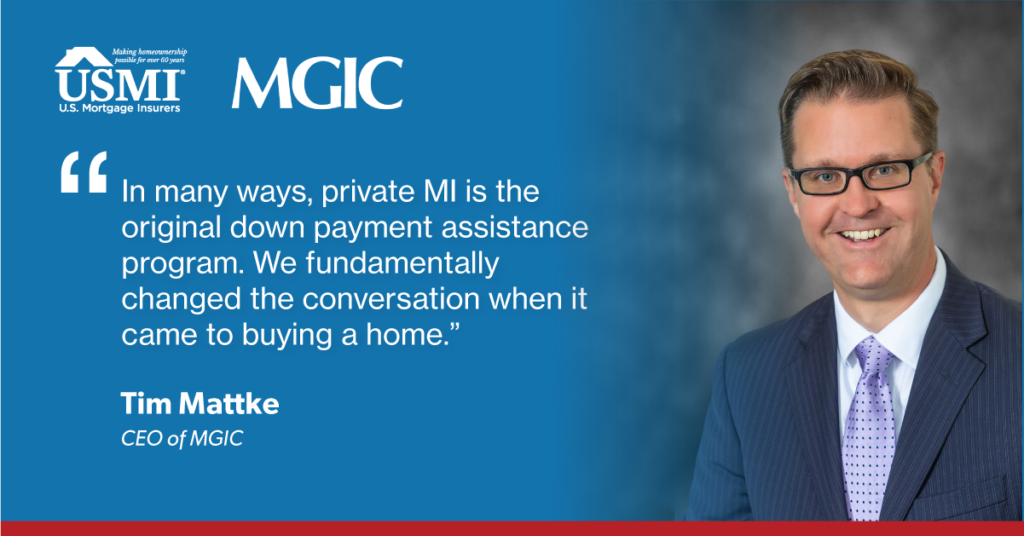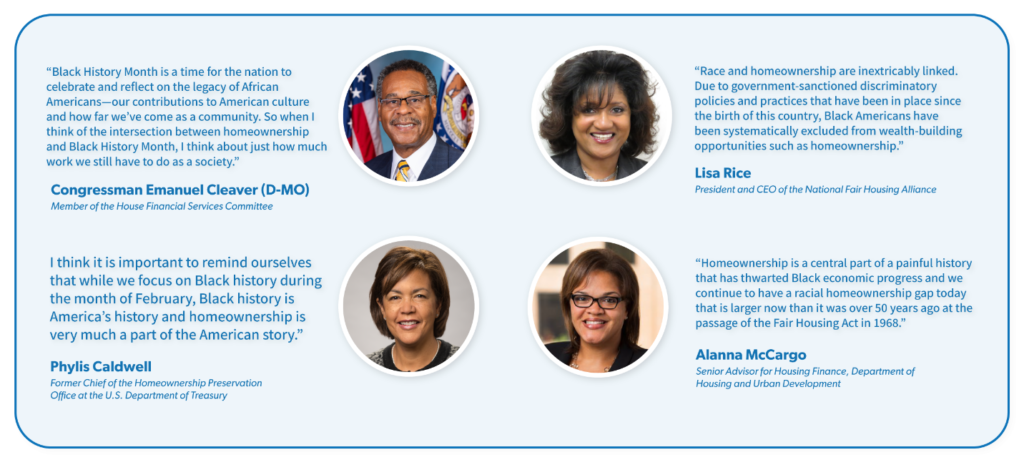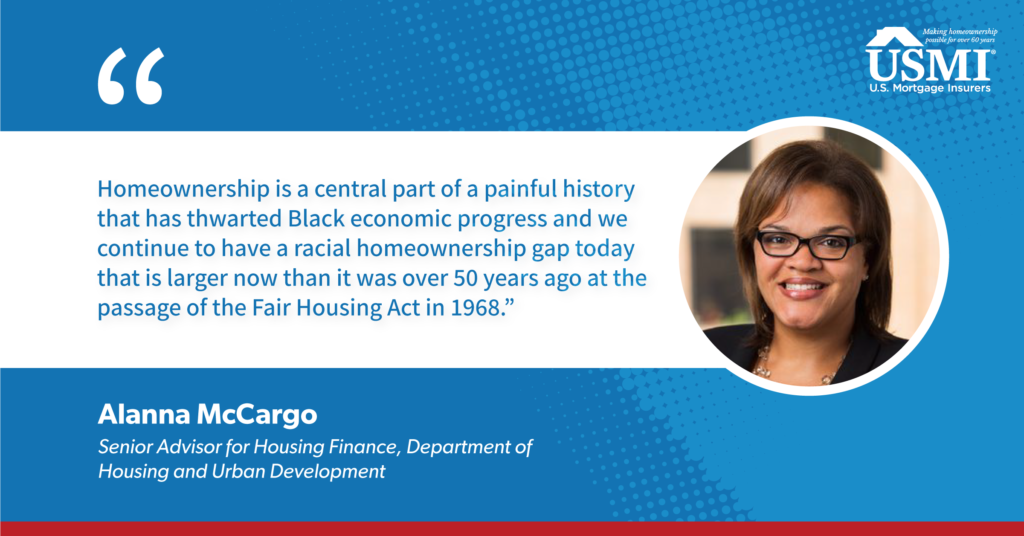(1) April is Financial Literacy Month. How does MGIC approach financial literacy and help first-time homebuyers get ready for the mortgage process?
The homebuying and mortgage process can seem daunting, especially to those going through it for the first time. In fact, the 2021 Home Buyers and Sellers Generational Trends Report from the National Association of REALTORS® (NAR) showed that “understanding the process” was the most difficult step, after finding the right property, among those aged 22 to 40.
To help overcome this challenge, MGIC has provided homebuyer education for decades. Last year alone, over 100,000 people took our online tests in English or Spanish. More recently we launched a consumer site, Readynest, which reached over 2 million page views in 2020. Readynest’s goal is not to sell MGIC or MI, but rather to demystify the homebuying journey through relatable explanations and stories of others who have gone through the process. The site helps aspiring homebuyers understand how to get their finances in order and includes guides on budgeting, credit, managing student loans, and mortgage insurance.
In addition, we have begun doing more direct outreach, presenting at state and local Housing Finance Agency (HFA) events to consumer audiences. This summer we are partnering with the Boys & Girls Club of Greater Milwaukee to present “The Path to Homeownership” to current college students and recent graduates.
(2) What is MGIC’s message to renters who are interested in buying a home but aren’t sure they can?
Frequently, renters self-disqualify themselves before they even begin. Many have preconceived notions about what it takes to buy a home and how much they need to put down, and too often give up without even trying. Certainly, saving for a down payment and paying bills on time are smart financial moves, but renters may not know how much they need to save. Or they don’t understand that they can have student loan debt and still qualify to buy a home. Many times, they end up waiting longer than necessary, and that could end up costing them more in the long run.
Our “buy now vs. wait calculator” helps renters compare that cost of waiting. Unlike a buy vs. rent calculator, which we also offer, this calculator allows the renter to determine for themselves when the right time to buy might be, based on their specific situation. Like Readynest, this calculator is available in English and Spanish.
(3) Do you think renters appreciate that they can buy a home with a low down payment? Why do you think the common misconception that a borrower needs a 20% down payment is still around?
The 20% down payment myth is so deeply ingrained in the media that it isn’t surprising that so many potential borrowers are held back by this false concept. Many mortgage calculators start with a default of 20% down. Even NAR’s Affordability Index reinforces this concept by using a 20% down payment as the working assumption. It is imperative that we continue to point out that there are many paths to homeownership. If a potential homebuyer believes they need 20% for a down payment, they could unnecessarily delay their first home purchase by many years. During those years they may miss out on increasing equity in the home, and they will very likely pay more for the home they eventually purchase. Just as important, they defer the improved quality of life that comes with achieving their dream of homeownership.
(4) Last year MGIC announced it was partnering with Down Payment Resource to launch “Down Payment Connect,” a program designed to help lenders match potential homebuyers to down payment assistance (DPA) programs. Can you speak to how this tool educates homebuyers on DPA and the value of these programs?
Many potential homebuyers – especially Millennial, minority, and first-time homebuyers – face barriers to saving for a down payment for a variety of reasons, including rising rents, student loan payments, and lack of intergenerational wealth. DPA programs can enable access to conventional financing and homeownership for those borrowers who may need that help.
There are more than 2,400 DPA programs across the country. Keeping up to date on the ins and outs and eligibility for all these programs is a challenge even for seasoned loan officers. So, it is no wonder that many homebuyers can be overwhelmed when beginning to search for programs for which they may qualify – assuming they know such programs exist. Down Payment Connect has been a great partnership with Down Payment Resource, enabling lenders to match borrowers with DPA programs. This assistance could be the difference between a family buying their first home and remaining renters.
(5) What are a few steps federal policymakers can take to make home ownership more accessible and affordable for first-time homebuyers?
It is important that federal policymakers recognize the importance of low-down payment lending, especially for minority, lower-wealth, Millennial, and first-time homebuyers. The expanded use of targeted DPA programs is worth exploring to enable more families to become homeowners. Rep. Maxine Waters, the chairwoman of the U.S. House Financial Services Committee, recently released a draft bill to create a program to provide first-time, first-generation homebuyers with DPA. Targeted solutions like this could play a role in narrowing the racial homeownership gap and address longstanding inequities in access to homeownership.
Access to credit is one side of the coin for homeownership and supply is the other side. In today’s environment, borrowers looking to capitalize on low interest rates are often boxed out of homeownership due to the lack of affordable housing supply. Policymakers should explore ways to reduce regulatory red tape regarding new home construction, or incentivize increased remodeling and rehabilitation of distressed properties, which are often located in central city neighborhoods. Taking measures like these could help increase affordable housing options and close the gap between demand and supply.
The shortage is especially acute in the lower end of the market where many first-time buyers are looking for “starter” homes. Housing supply is at the lowest level of this century, with just two months of supply as of February 2021 according to NAR and the Urban Institute. The lack of supply in turn has led to record year-over-year Home Price Appreciation (HPA), which was 10.8 percent last year according to the Federal Housing Finance Agency (FHFA). Strong HPA is great for current homeowners, but it creates a moving target for those looking to transition from renting to owning.
(6) Considering MGIC’s unique position as the first private MI company, in your opinion, how has private MI improved the housing finance system and homebuying process since 1957?
In many ways, private MI is the original down payment assistance program. We fundamentally changed the conversation when it came to buying a home. Prior to MGIC and the private MI industry in 1957, unless a person relied on the government and the Federal Housing Administration (FHA), the focus by lenders was to increase the amount of equity in the property to help reduce potential losses that may arise from a foreclosure. So, the question lenders would ask is “how much money do you have?” to put down when buying a home. Private MI helped remove or reduce this barrier, changing the conversation to “how much could you afford?” as it “created” the equity lenders sought.
We are able to facilitate access to affordable, low down payment mortgages by providing critical risk protection for lenders, the government sponsored enterprises (GSEs), and American taxpayers. Private MI companies work to not only get buyers into homes, but to keep them there so they may build the long-term, generational wealth that is associated with homeownership.
Since 1957, the private MI industry has helped 35 million homeowners either purchase a home or refinance an existing mortgage, including more than 2 million borrowers in 2020 alone, with nearly 60 percent of purchase loans going to first-time homebuyers.














